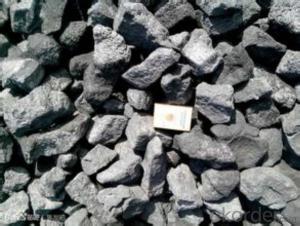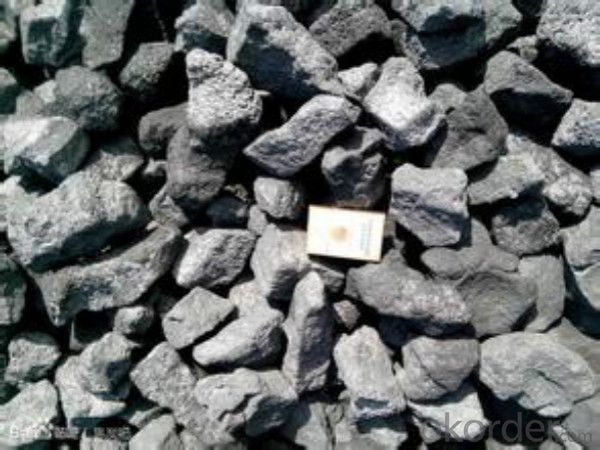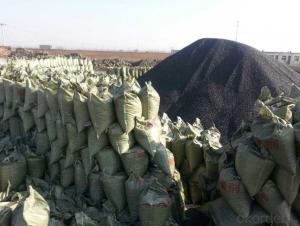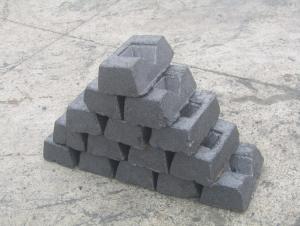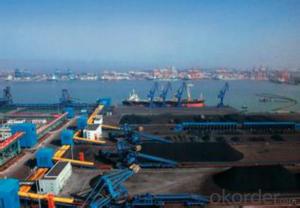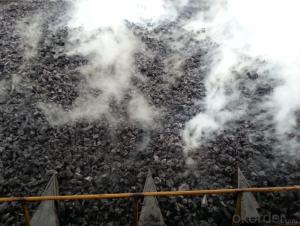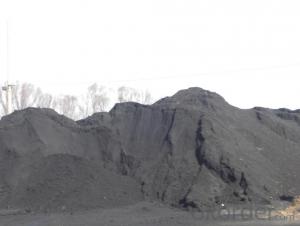10-15mm Low Sulfur Met Coke Made in China
- Loading Port:
- Tianjin
- Payment Terms:
- TT OR LC
- Min Order Qty:
- 100 m.t.
- Supply Capability:
- 20000 m.t./month
OKorder Service Pledge
OKorder Financial Service
You Might Also Like
Product Description
Met Coke(metallurgical coke) is a carbon material resulting from the manufactured purification of multifarious blends of bituminous coal. In its natural form, bituminous coal is soft; its medium-grade composite contains a high occurrence of unstable components. The majority of the unstable components are either reclaimed or recycled.
The coke handled by our corporation is made from superior coking coal of Shanxi province. Provided with the advantage of low ash, low sulphur and high carbon. Our coke is well sold in European,American, Japanese and South-east Asian markets. Our owned Coke plant are located in Shanxi Province and supplying of you many kinds of coke.
Features
It is widely used in casting and metallurgy Smelting every tons Irons need about 0.4 to 0.6ton coke. As the reducing agent in the steel-making and foundry industry.
Specification
Item No. | Ash (%) max | S (%) max | F.C. (%) min | V.M (%) max | Moisture (%) max | P (%) max | CSR (%) min | CRI (%) max | Cal.Value (≥Kcal/Kg) |
NF-M001 | 9 | 0.6 | 89.5 | 1.2 | 5 | 0.035 | 65 | 25 | 7250 |
NF-M002 | 10.5 | 0.6 | 88 | 1.2 | 5 | 0.035 | 65 | 25 | 7100 |
NF-M003 | 12 | 0.6 | 86.5 | 1.5 | 5 | 0.035 | 63 | 28 | 6900 |
NF-M004 | 13 | 0.6 | 85.5 | 1.5 | 5 | 0.035 | 60 | 30 | 6800 |
Pictures
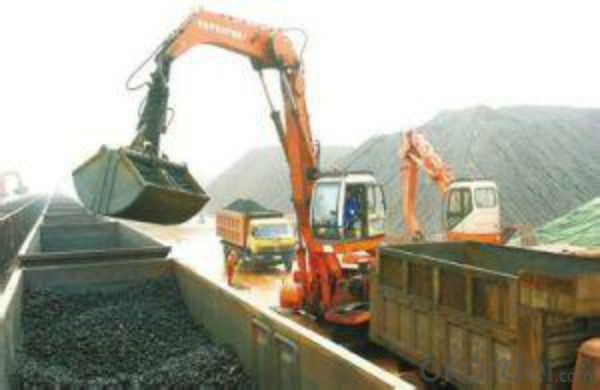
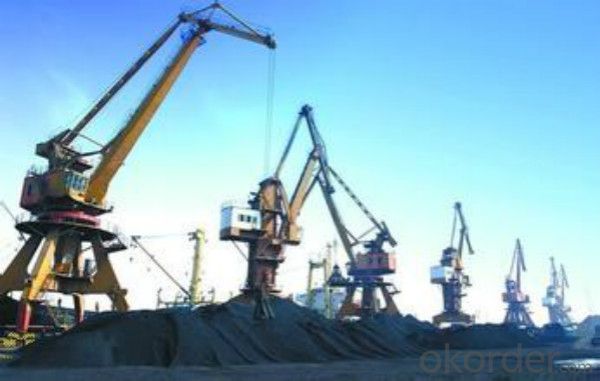
FAQ
1 What is the packing?
Packaging Details: | 1. jumbo ton bag |
2 Delivery time? Delivery Detail: |
15 days after we get the advanced payment or original L/C |
- Q: What are the different types of carbon-based polymers?
- Carbon-based polymers come in various types, each possessing unique properties and applications. Some commonly encountered variants include: 1. Polyethylene (PE): Esteemed for its exceptional strength and chemical resistance, PE is extensively utilized in packaging materials, plastic bottles, and pipes. 2. Polypropylene (PP): PP is akin to PE, but it boasts a higher melting point and superior heat resistance. This makes it a popular choice for automotive parts, textiles, and food packaging. 3. Polystyrene (PS): PS is a lightweight and rigid polymer frequently employed in packaging materials, disposable utensils, and insulation. 4. Polyvinyl chloride (PVC): PVC is a versatile polymer that can be either rigid or flexible based on the additives employed. It finds common application in pipes, electrical insulation, and flooring. 5. Polyethylene terephthalate (PET): PET is a robust and lightweight polymer commonly found in beverage bottles, food containers, and synthetic fibers. 6. Polyurethane (PU): PU is a flexible and durable polymer utilized in foams, coatings, adhesives, and textiles. 7. Polycarbonate (PC): PC is a robust and transparent polymer regularly utilized in eyeglass lenses, safety goggles, and electronic components. 8. Phenolic resins: Renowned for their exceptional heat resistance, these polymers are commonly employed in coatings, adhesives, and electrical components. These examples represent only a fraction of the diverse range of carbon-based polymers available. Each type possesses specific properties and applications, rendering them suitable for a wide array of industries and products.
- Q: Speak in detail! I am ~ carbon Roast Lamb Leg lamb chops lamb barbecue ah ~ ~ how to do with practice video line! And how do you bake the oven?
- Step 2: prepare garlic paste, starch paste, mixed evenly, with the barbecue. The purpose is to make the lamb roast outside tender, and not paste, garlic flavor rich, delicious, very delicious, this is a unique secret recipe, dedication. Step 3: students after adding charcoal, grill, the best 30 cm distance between the grill with charcoal, around to gather, the formation of hot absolute direction, to avoid heat loss. Lamb must be able to rack up and down around the inversion freely, to evenly bake. Bake for 7 minutes until the lamb cooked, mashed garlic paste to wipe, scorched yellow Maoyou creaking, sprinkle with pepper and natural. Time to master almost on the line. Because mutton has the distinction between the old lamb and the lamb, it is difficult to grasp the baking time. If you use a home electric oven, you'll need to marinate the mutton first. Methods: fresh meat (lean half) dice, into the pot, cumin, pepper, fennel, two, ginger,
- Q: What are the different types of carbon-based drugs?
- There are several categories in which carbon-based drugs can be classified, based on their chemical structure and mode of action. One of the most common categories is alkaloids, which are naturally occurring compounds found in plants and have powerful pharmacological effects. Examples of carbon-based alkaloid drugs include morphine, codeine, and cocaine. Another category of carbon-based drugs is steroids. Steroids are compounds characterized by a carbon skeleton consisting of four fused rings. They are widely used in medicine because of their anti-inflammatory and immunosuppressive properties. Examples of carbon-based steroid drugs include cortisone, prednisone, and estrogen. Additionally, carbon-based drugs can be classified as nonsteroidal anti-inflammatory drugs (NSAIDs). These drugs work by inhibiting the action of cyclooxygenase enzymes, which reduces pain, inflammation, and fever. Common carbon-based NSAIDs include aspirin, ibuprofen, and naproxen. Furthermore, carbon-based drugs can be categorized as antibiotics. These are compounds derived from microorganisms or synthesized artificially that hinder the growth of bacteria or other microorganisms. Examples of carbon-based antibiotic drugs include penicillin, tetracycline, and erythromycin. Lastly, carbon-based drugs can also be synthetic compounds designed to target specific receptors or pathways in the body. These drugs are often created through extensive research and testing to treat various diseases and conditions. Examples of such drugs include cholesterol-lowering statins, antipsychotic medications, and anti-cancer drugs. To sum up, carbon-based drugs can be classified into alkaloids, steroids, NSAIDs, antibiotics, and synthetic compounds. Each category consists of drugs with diverse chemical structures and mechanisms of action, allowing for a wide range of therapeutic applications in the field of medicine.
- Q: How does carbon affect the migration patterns of birds?
- Carbon emissions and the resultant climate change have a significant impact on the migration patterns of birds. The increase in carbon dioxide levels in the atmosphere leads to global warming, which affects various environmental factors such as temperature, precipitation, and vegetation growth. These changes directly influence the availability of food, water, and suitable habitats for birds during their migratory journeys. One of the key ways carbon affects bird migration is by altering the timing and duration of seasonal events. For instance, warmer temperatures can cause plants to bloom earlier or delay their growth, disrupting the synchronized timing of flowering and the arrival of insects. This can have serious consequences for birds that rely on these resources for food during their migration. If birds arrive at their breeding grounds or stopover sites and find a lack of food, it can lead to decreased survival rates, reduced reproductive success, and overall population decline. Additionally, changes in precipitation patterns due to carbon emissions can affect the availability of water sources along migration routes. Birds rely on these water bodies for drinking and bathing, especially during long flights. If these water sources dry up or become scarce, it can force birds to alter their flight paths, search for alternative water sources, or even risk dehydration. Furthermore, carbon-induced changes in vegetation cover can impact the availability of suitable habitats for birds. As temperatures rise, some bird species may face challenges in finding suitable breeding or nesting sites. Forest-dwelling birds, for example, may experience habitat loss as forests are degraded or replaced by drier ecosystems. This can disrupt their migratory patterns and potentially lead to population declines or range shifts. Overall, the impact of carbon emissions on bird migration patterns is complex and multifaceted. As climate change continues to unfold, it is crucial to mitigate carbon emissions and implement conservation measures to ensure the survival and well-being of migratory bird populations. Protecting crucial stopover sites, promoting habitat restoration, and raising awareness about the consequences of carbon emissions can all contribute to preserving the intricate and vital phenomenon of bird migration.
- Q: What is carbon fiber reinforced polymer?
- Carbon fiber reinforced polymer (CFRP) is a composite material that combines carbon fibers with a polymer matrix, resulting in a strong and lightweight material. Carbon fibers are thin, strong, and composed of carbon atoms bonded together in a crystalline structure. These fibers are embedded in a polymer matrix, typically made of epoxy resin, which binds the fibers together and provides support. The combination of carbon fibers and polymer matrix results in a material that has a high strength-to-weight ratio, making it ideal for various applications. CFRP is known for its exceptional stiffness, strength, and resistance to corrosion and fatigue. It is extensively used in aerospace, automotive, sports equipment, and other industries where lightweight and high-performance materials are required. The unique properties of CFRP make it an excellent alternative to traditional materials like steel, aluminum, and fiberglass, providing superior strength and durability while significantly reducing weight.
- Q: How is carbon used in the production of fertilizers?
- Fertilizer production relies on carbon as a vital ingredient. Various forms of carbon, such as organic matter, carbon dioxide, and carbonates, are used for this purpose. These carbon sources have multiple benefits, including enhancing soil fertility, promoting plant growth, and increasing crop yield. Organic matter, such as compost, manure, and crop residues, contains decomposed plant and animal materials, providing carbon to the soil. When incorporated into the soil, these organic sources supply plants with essential nutrients like nitrogen, phosphorus, and potassium. They also improve soil structure, water retention, and microbial activity, all of which are crucial for optimal plant growth. Carbon dioxide (CO2) is another valuable source of carbon utilized in fertilizer production. This greenhouse gas is captured from industrial emissions and utilized in the production process. CO2 is transformed into different chemical compounds like urea and ammonium bicarbonate, which serve as nitrogen fertilizers. These fertilizers gradually release nitrogen, ensuring a continuous supply of nutrients to plants over an extended period. Furthermore, carbonates, particularly calcium carbonate, are employed as neutralizing agents in fertilizers. They aid in balancing the pH levels of acidic soils, making them more suitable for plant growth. Additionally, carbonates provide a source of calcium, an essential nutrient that further enhances plant growth and development. To summarize, carbon plays a critical role in fertilizer production by providing essential nutrients, improving soil fertility, and enhancing plant growth. Whether in the form of organic matter, carbon dioxide, or carbonates, carbon is an indispensable component that contributes to the success of modern agriculture.
- Q: How do human activities contribute to carbon emissions?
- Human activities contribute to carbon emissions in various ways. One major source is the burning of fossil fuels such as coal, oil, and natural gas for transportation, electricity generation, and industrial processes. Deforestation and land-use changes, mainly for agriculture and urbanization, also release significant amounts of carbon dioxide into the atmosphere. Additionally, industrial processes, including cement production and chemical manufacturing, release greenhouse gases. Overall, our reliance on fossil fuels and unsustainable land management practices are the primary drivers of human-induced carbon emissions.
- Q: What is carbon monoxide poisoning?
- Carbon monoxide poisoning is a potentially life-threatening condition that occurs when a person inhales excessive amounts of carbon monoxide gas. This gas is colorless, odorless, and tasteless, making it difficult to detect without proper monitoring equipment. When inhaled, carbon monoxide displaces oxygen in the bloodstream, leading to oxygen deprivation to vital organs and tissues. Symptoms can range from mild headache and nausea to dizziness, confusion, and even death. It is crucial to have working carbon monoxide detectors in homes and to seek immediate medical attention if poisoning is suspected.
- Q: What is carbon offsetting in the hospitality industry?
- Carbon offsetting in the hospitality industry refers to the practice of taking actions to compensate for the greenhouse gas emissions produced by a hotel or resort. This can involve investing in projects that reduce or remove carbon dioxide from the atmosphere, such as renewable energy initiatives or reforestation efforts. By offsetting their emissions, the hospitality industry aims to reduce their environmental impact and contribute to the global fight against climate change.
- Q: What is carbon dating?
- The determination of the age of organic artifacts, such as ancient human remains or archaeological objects, is made possible through the utilization of carbon dating, a scientific method. This method relies upon the presence of a small quantity of radioactive carbon-14, which is a rare isotope of carbon, within all living organisms. As an organism perishes, it ceases to absorb carbon-14, resulting in a gradual reduction of this isotope through radioactive decay. By calculating the ratio of carbon-14 to carbon-12 in a given sample, scientists are able to approximate the duration since the organism's demise. This technique offers precise estimations of age up to approximately 50,000 years, thereby proving invaluable when dating artifacts from prehistoric eras. The impact of carbon dating on the field of archaeology has been groundbreaking, as it has played a pivotal role in comprehending the chronologies of human history and the evolution of diverse civilizations.
Send your message to us
10-15mm Low Sulfur Met Coke Made in China
- Loading Port:
- Tianjin
- Payment Terms:
- TT OR LC
- Min Order Qty:
- 100 m.t.
- Supply Capability:
- 20000 m.t./month
OKorder Service Pledge
OKorder Financial Service
Similar products
Hot products
Hot Searches
Related keywords
